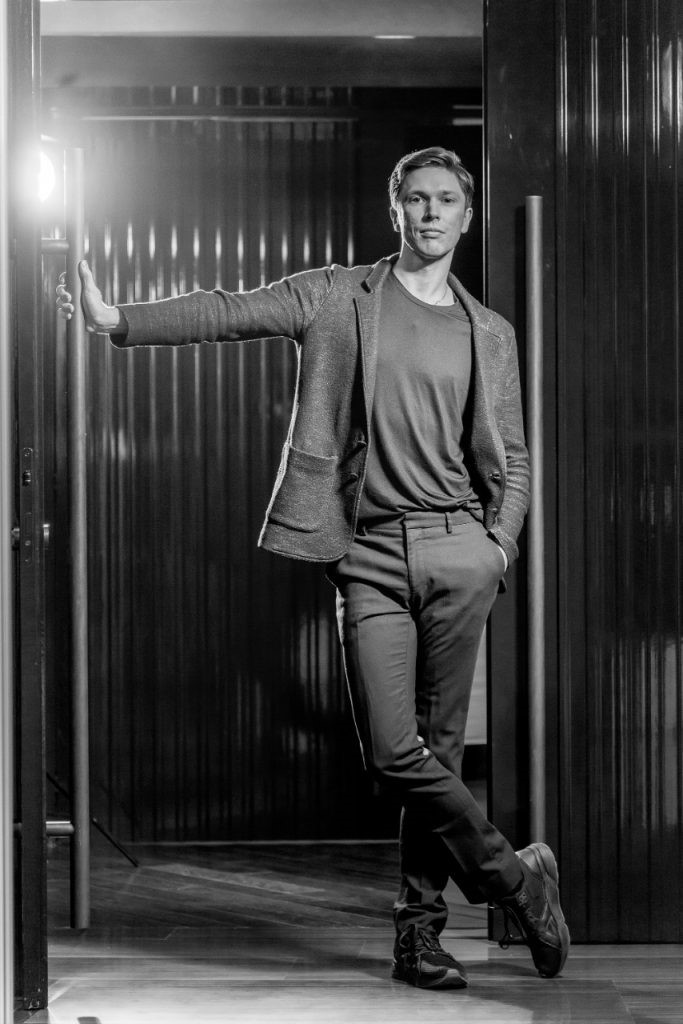A Man of Many Talents
Choreographer, Artistic Director, Dance Teacher, and Producer
Interview by Chris Duncan
David Jonathan is an Australian/ Belgian internationally acclaimed Choreographer, Dance Teacher, Rehearsal Director, and Guest Speaker that has taught and performed all over the world. David has incredible managerial experience in the performing arts, he’s a Bachelor of Business and Management student at Swinburne Online and he is also an advocate for nurturing talent and realizing quality results with sensitivity to inclusivity, diversity, and equity.
Chris Duncan recently caught up with David to talk about his learning career and offer advice to other dancers looking to future proof their lives post dance.
Q: What can you share with us about your experience in the ballet world?
Well, it started in Australia as a student in Brisbane, Queensland. I was in an amateur dance school there. Then I joined the Queensland Dance School of Excellence, which is now Queensland Ballet Academy. After that, I went to the Australian Ballet School Melbourne for three years. Then I joined the Western Australian Ballet. I was there for a year and a half and it was an incredible start to my career, because the company was very small at that point and right from my first production, I was already learning and doing principal roles, as well as group stuff.
Then I moved to Belgium. I was in Antwerp, Belgium with the Royal Ballet Flanders for nine years. I worked my way up the ranks and I experienced so much. I feel like I was spoiled there. Doing the classics, we even had a Swan Lake created by Marcia Haydee, the great Brazilian premium ballerina. We were the only company that was touring his two big, full-length ballets. That was kind of like the golden ticket that our director had at the time that took us all around the world.
I also got to work with Jiri Kylian which was a dream come true, as well as William Forsythe and many, many, many choreographers. After that I went to Astana Ballet in Kazakhstan. I was there for almost six years. The company was originally only female dancers, and I was one of the first three men to join the company. Kind of pioneer in that sense. But very rapidly the company grew, and now there’s like, probably, I think between 30 and 40 men and 30, 40 women.
Q: How has ballet evolved over the last decade?
I feel like I was very lucky. What has been happening in Europe is there’s been less and less and less of the big classics and a lot of companies have actually lost classical ballet altogether. I have nothing against contemporary works or classic works, I don’t have one that I prefer, because I love both equally. I feel like politics interferes too much into the arts world, and it’s killing it. I grew up hearing all the time, oh, classical ballet’s dying, classical ballet’s dying. And I didn’t really understand it until I started seeing it for myself. There’s that. And classical ballet, you can’t say that it’s more expensive. Perhaps it is in the initial cost, because of the big costumes, the sets, the orchestra, and all that. But then it’s there forever, isn’t it?
Q: So tell me a little bit more about Astana.
So my partner was invited to create a ballet for Astana Ballet and he made a 30 minute all female piece, which was a challenge in itself. But it was such a huge success that he was then invited to be the artistic director and resident choreographer. So that’s kind of how I went there, I went as dancer/ballet master, so I was jumping between the two. It’s a big challenge actually, because you have to go from being the dancer, being told what to do all the time, and then going to the front of the room and guiding dances and the whole room, and also liaising between all departments. But what I found most tricky was going from that back to the dancer again, I had to just stand there and keep my mouth shut.
Q: What’s in the very near future for you? What’s the schedule looking like?
I’m flying to Cali, Colombia where my husband to be, and I will be staging three of his ballets for the National Ballet Company there. But we’ll be there for six weeks. It’ll be a triple bill, and that’s a big project in itself. And then we’ll fly back here in Brazil, and a few days later I’ll be flying to Estonia to Tallinn because I’m joining the Estonian National Ballet as a ballet master.
Q: There’s lots of young ballet dancers here in Australia, but particularly the young male dancers often young male dancers get a rough time growing up, what would you say in words of encouragement to particularly young male dancers coming through the ranks, who have dreams of doing what you do? You know, what words of advice would you give them?
Oh, this is such an important question, because although it seems that the world is evolving and becoming more accepting, I don’t know how true that is. I haven’t lived in Australia since 2007. So, when I hear this question, I think back to how it was for me growing up, and it was horrible. It was very traumatizing growing up wanting to be a dancer, being a male. But what got me through it was surrounding myself with good people, whether that be your family or your chosen family. And if dance is what you want, immerse yourself in it. Go to your dance classes every afternoon if you can, after school. If financially things are not possible, find a way, there is always a way, whether you work an extra job, when I was in ballet school, I was working at a cafe most nights. But don’t let anything stop you, basically.
Bio -DAVID JONATHON – Choreographer, Artistic Director, Dance Teacher and Producer.
David has performed, choreographed, guest spoken, and taught throughout Australia, Europe, Central Asia and the US in major theatres, festivals, universities and schools.
In his extensive career as dancer and choreographer, he was first with the West Australian Ballet, then the National Ballet of Flanders in Belgium. He was also a former principal dancer with the Astana Ballet since 2016. In 2019 he was nominated by Dance Europe magazine as a “Dancer to Watch”
He has also won the the inaugural Australian Choreographic Competition and the choreography prize at the Helsinki International Ballet Competition that he created for a dancer.














